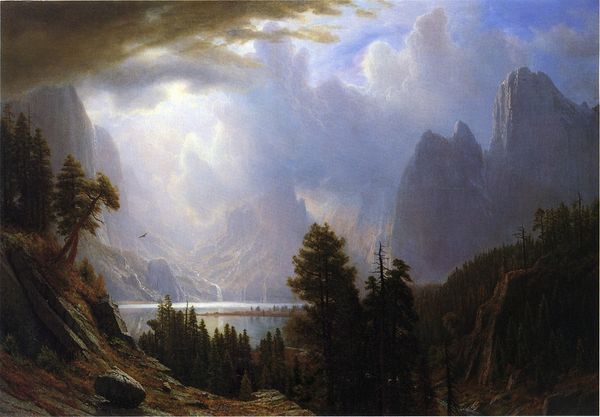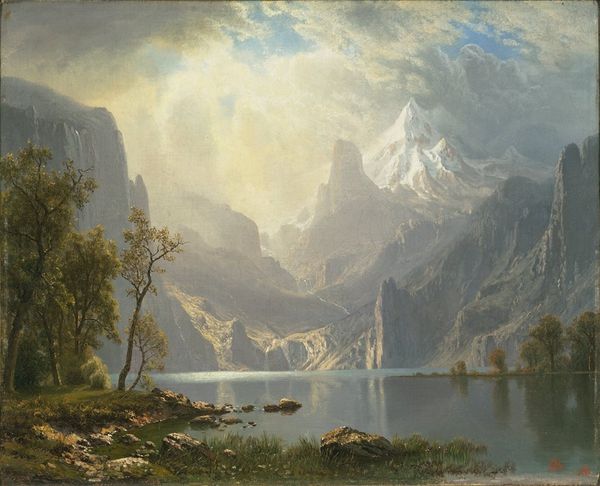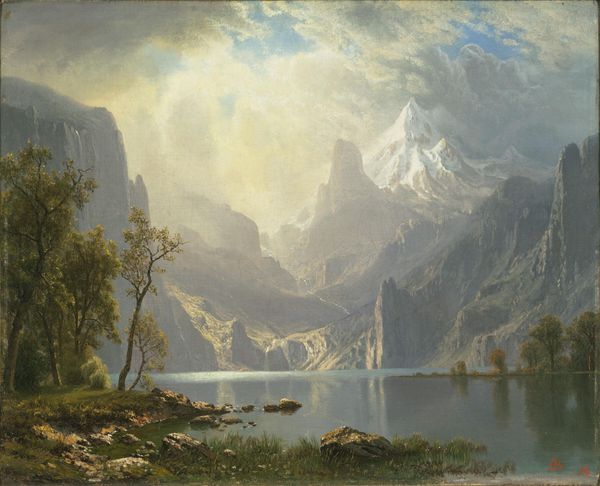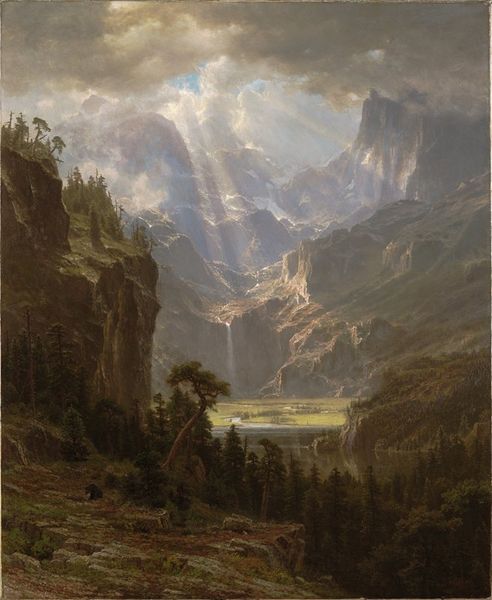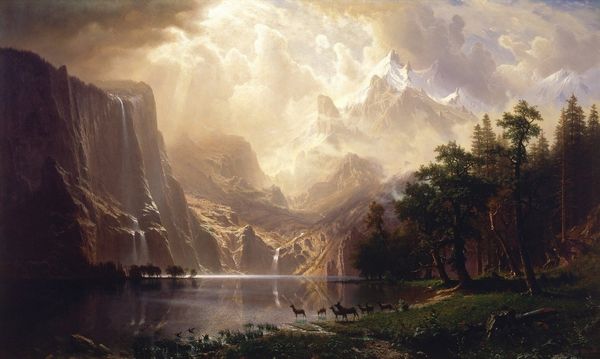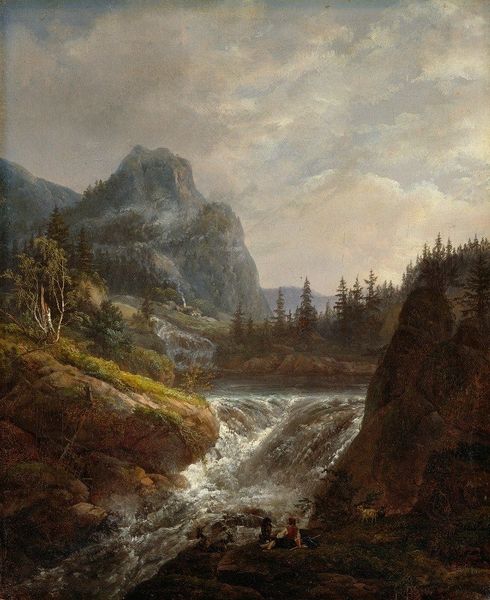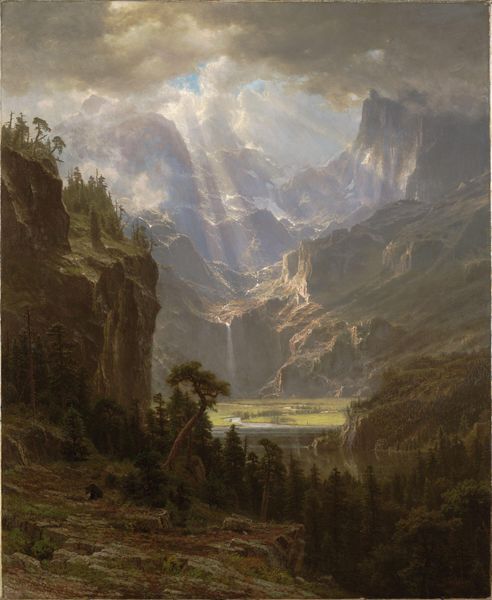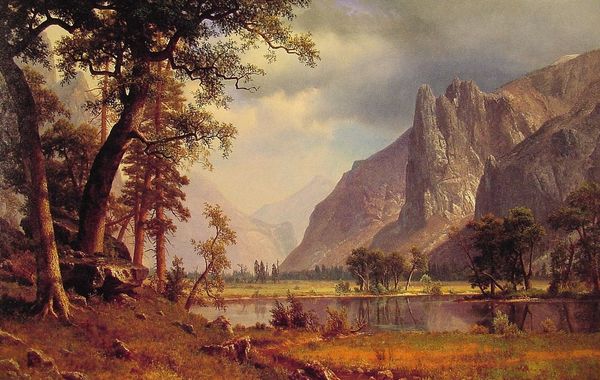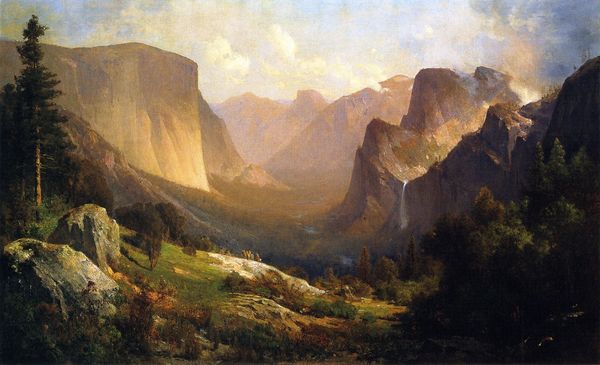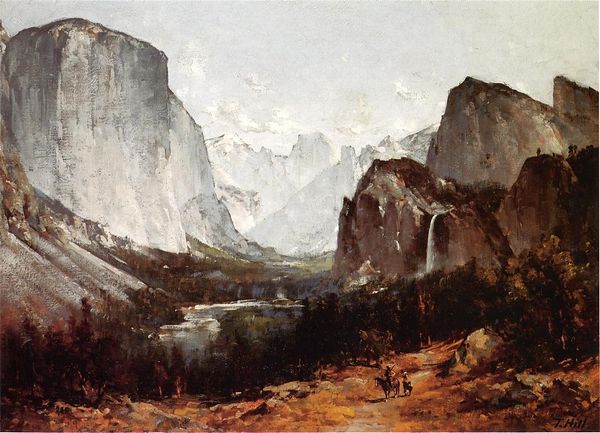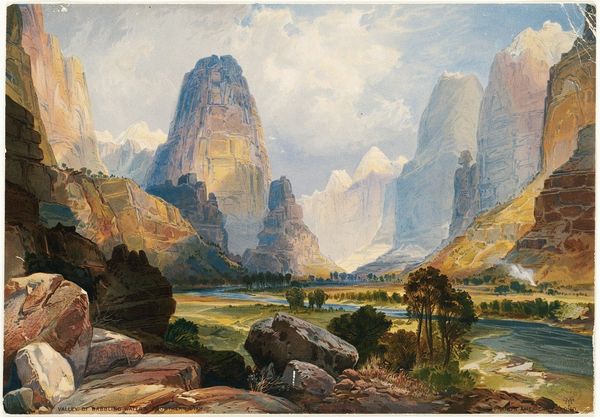
Copyright: Public Domain: Artvee
Albert Bierstadt painted Merced River, Yosemite Valley during a period of westward expansion in the United States. Bierstadt's large-scale landscapes contributed to the romanticized vision of the American West as an untouched Eden, even as that landscape was being dramatically altered by settlement, resource extraction and the displacement of Indigenous peoples. The painting invites us to consider the complex relationship between the aesthetic appreciation of nature and the historical realities of land use and ownership. Note that, while appearing uninhabited, the painting includes Indigenous people in the foreground as part of the landscape. These paintings helped shape national identity and the idea of Manifest Destiny, entwining notions of progress, race, and the control of natural resources. What do you think about how landscapes play a role in constructing and reinforcing power dynamics and cultural narratives?
Comments
No comments
Be the first to comment and join the conversation on the ultimate creative platform.
